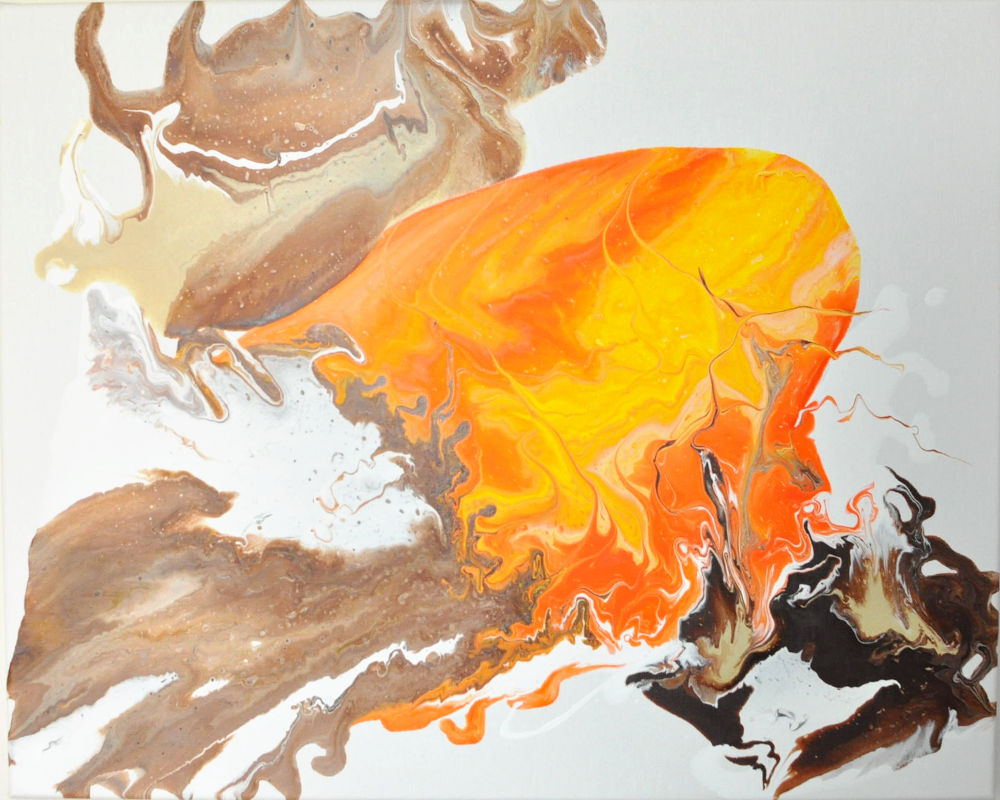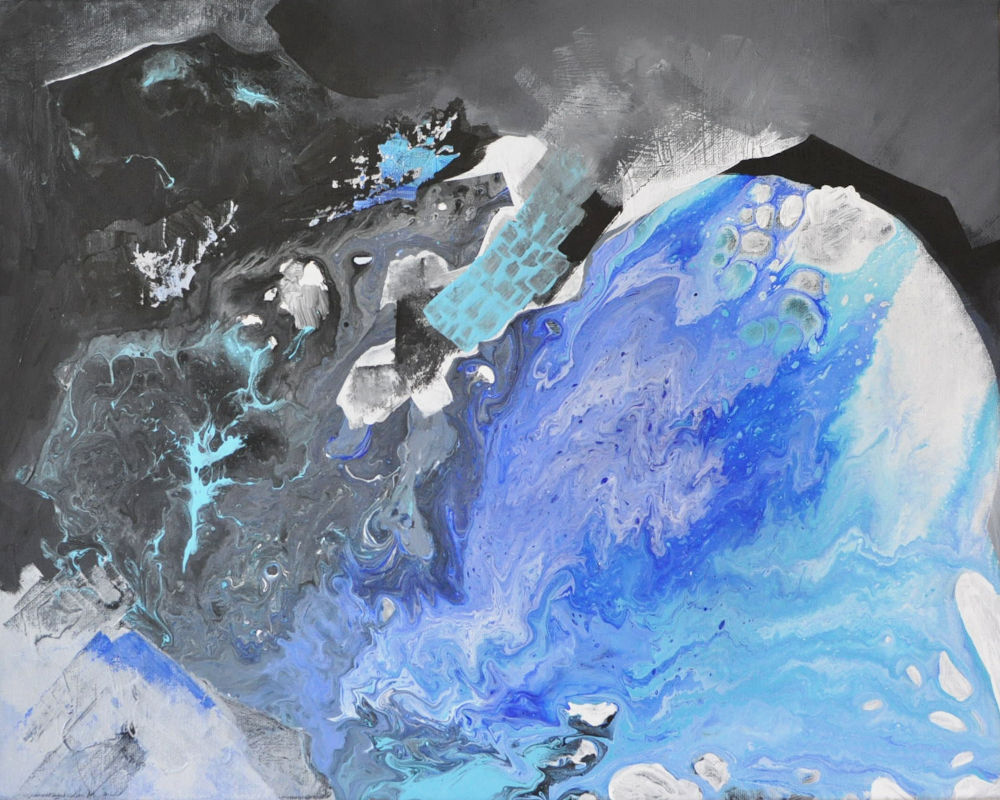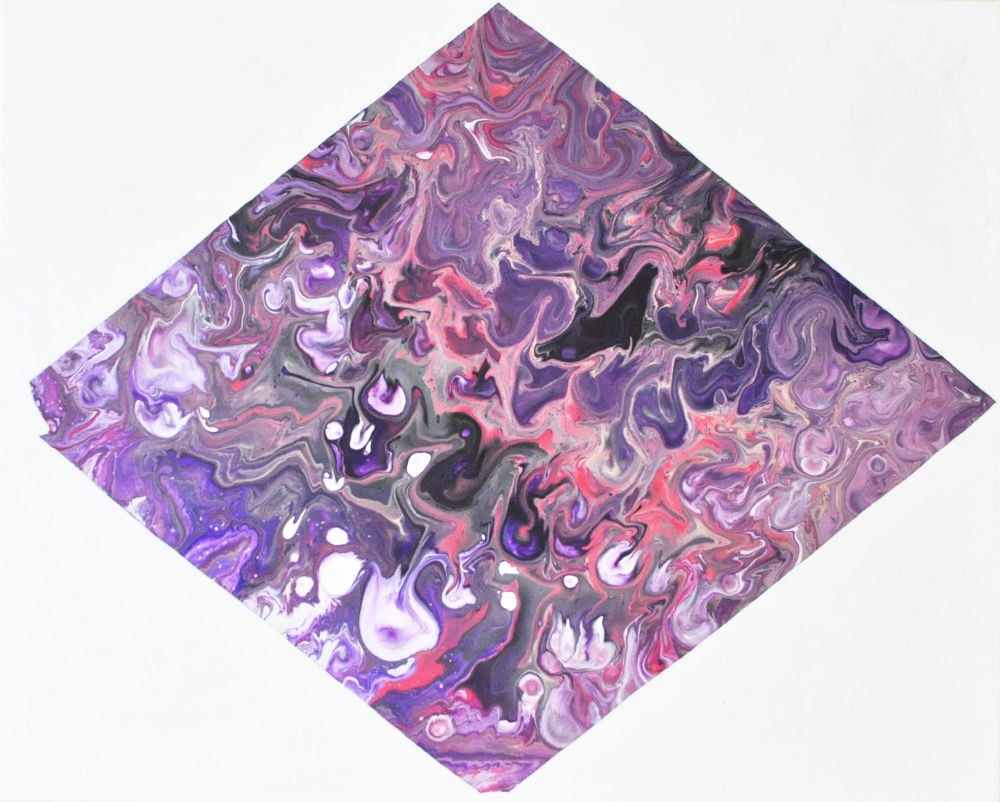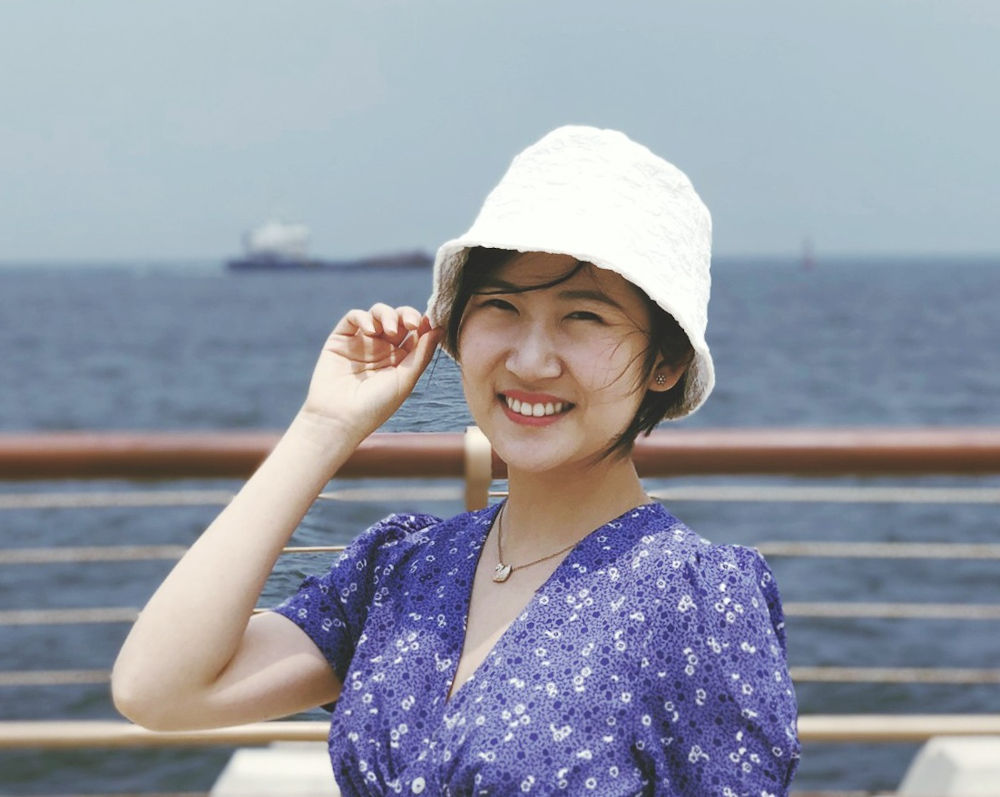Weiyi Zhang, a curator based in Beijing, China interviewed a London-based abstract artist Arina Zinovyeva

As an artist and a language teacher, born in Russia and based in Australia, Arina’s life is amazing and enviable to me. Today, we are going to talk about her abstract artworks and transitions in studying as well as career life and to explore her artistic ideas associated with a wonderful life.
Weiyi Zhang: What do you think of the influence of different cultural backgrounds (Russia, England and Australia) on your paintings?
Arina Zinovyeva: Well, that’s a good and broad question. An artist probably doesn’t realize how exactly she is influenced by her physical environment when she goes to another country. This is definitely my story. I never consciously realized how much each country affected my art practice. I would say that the main influence of these three countries is their pace. Each country has a unique rhythm. I think the external pressure or lack of pressure is the main factor affecting my work.
For example, when I was in my hometown Russia, there was not much external pressure for me to create a final product, so I felt more relaxed to make mistakes and experiment with rough sketches or drawings. But there was a completely different story when I was in London. I felt that if I started a painting I needed to produce a high quality image with balanced colours and designs. No one was telling me to fulfill requirements but I felt under pressure that was probably generated by the city’s energy.
Weiyi Zhang: Did you choose Australia for your future life because it has an atmosphere suitable for a creative process?
Arina Zinovyeva: Yes, Australia is definitely a great platform for experimentation, where I feel free to be both a teacher and an artist. Besides, the Australian culture is welcoming, and its pace is not as high as in London.
Weiyi Zhang: What’s your favourite abstract artist and why? Is there any artist that has inspired you?
Arina Zinovyeva: This is a tricky question, because artists that inspired me were mostly my university peers. When I was studying in Australia, there were other students who were creating artworks by my side. It was not necessarily their style or an art philosophy that inspired me, but their dedication that was shining through when they were working on their art, being completely immersed in the process. I also like Post-Impressionism, for example, Paul Gauguin. This is an art movement where I gain ideas; I like seeing how elements from realism are combined with abstract bright colours.
Weiyi Zhang: What about your typical creative routine, do you usually have a clear understanding of what you want to draw? Or do you figure it out on the go?
Arina Zinovyeva: Actually, I don’t consciously think about this. But in the past two years, I’ve noticed that most of the time I feel an impulse or push to create and express something that had happened to me or others. And I want to externalize it into something visible. So, generally I don’t see a finished drawing in my mind, instead, I have a strong intention to bring out an emotion or visualise an intellectual exploration. Most of the time I don’t really know what my paintings will look like.
My paintings combine emotions and my understanding about others. What especially drives me to create is experiencing complex and challenging social situations. It gives me great joy to decipher societal codes that are full of ambiguity and unpredictability. Relationships change over time. When I paint, I attempt to understand people’s intentions and motivations. What do they want? What do they need? Why do they act in certain ways? I want to find a language for my intellectual and emotional exploration, and that’s why I turn to other professionals like quantum physicists to see how they describe humanity. They give me a language and a system to understand the world.
Weiyi Zhang: I noticed that in many of your works, you combined a variety of media(ink, pencil, gel, etc.). Is the process of working with mixed media different from using a single medium?
Arina Zinovyeva: Every medium ignites a certain thought. For instance, ink is diluted and flowing. Naturally, it expresses aliveness, freedom, and the ease of making decisions. Whereas, other media like pastel, which has more texture, has resonance with emotions such as doubt, hesitation and confusion. By using multiple media in a single artwork I am able to express a whole array of human thought and emotion.
Sometimes a painting encompasses the summary of a complex situation. The process of painting is similar to reading a ten-page long article and having to condense it into one paragraph. The medium of charcoal, for example, is a perfect way of summarising a complex set of emotions and experiences. This fragile medium makes you work fast and think on your feet.

Weiyi Zhang: How do you attribute different parts of a painting to a specific medium? For example, in which part of your painting would use ink? And where in the painting would it be better to use pencil? Could you give us some examples?
Arina Zinovyeva: There is one painting where I use ink, gesso and charcoal. A pre-story: I was working in the office before March 2020, and although I had well established routines, I also had some freedom of completing my tasks in a way that was suitable to me. The environment was fluid yet and established, so I compare it with ink, a medium that is both controllable and mutinous. To create a work-life balance, I need support from someone I can lean on, for example, my family or my partner. I compare this solid support with gesso. When I paint, I notice that gesso can restrain the fluidity of ink, just like people who support us can put some boundaries on us either consciously or unconsciously. There has to be a balance between free experimentation and daily responsibilities.
Weiyi Zhang: Some of your works are related to quantum physics, which is an area that most artists will not be involved in. Why are you interested in advanced science? How do you relate art to physics?
Arina Zinovyeva: I got interested in quantum physics when I met my partner who is a physicist and a mathematician. He and I would discuss his research on a daily basis, and I started reading some scientific papers and books. I was studying for a bachelor degree then, and when my professors and tutors learnt that I was interested in visualising theoretical quantum physics, they were intrigued, and I got support from them. Quantum physics definitely provided me with a system of language. By reading peer-reviewed articles, I learnt about a new language to describe the world. Scientists have their own jargon to express processes happening on a subatomic level; this jargon can also be translated into social sciences. There is a cross-disciplinary study that explores the relationships between quantum physics and society. In the process of creating abstract paintings, I look for a language to express what happens in society, and quantum physics can break down complex processes and provide me with a new way of looking at the world. I use that scientific language to explain what happens in abstract art. Science is my anchor.

Weiyi Zhang: Besides quantum physics, are you planning to use other advanced science in your paintings in the future?
Arina Zinovyeva: It’s possible. If I start to focus on another branch of science, I will need to research more about science such as biology which has so much information. What I’m going to do after is something deeper, deeper interpretation of statistics and experiments. What do they mean for us? What is the implication of these experiments in labs? I’m looking for ways to bring the deeper meanings of science into our everyday lives.
Weiyi Zhang: Why did you decide to teach languages? Do you find any inspiration for your paintings in the teaching process, and how does it inspire you?
Arina Zinovyeva: Language is something that is very natural for me to teach. I learned English in my early years as my second language, and I’m passionate about passing this knowledge to others. I am a native speaker of Russian, and I love sharing my culture with foreigners. I think teaching languages is a really good way to connect with people on a deeper level. When you teach Russian to someone who doesn’t know much about this language, you observe how people deal with their vulnerabilities, how much they are able to push themselves, how they motivate themselves to overcome numerous little problems. As a teacher, you learn how to motivate people so that they can keep learning.I enjoy supporting people who decided to follow this journey. Through teaching, I learn to understand people better. Having some clarity about certain social situations inspires me to paint; certain discoveries about people and their character gives me fresh ideas for my abstract painting. The more I experiment with abstraction, the clearer this journey becomes. Abstract painting is not random; there is certain logic in it. I really love to record my discoveries in a form of painting. Working with abstraction allows me to follow my instincts and create something I truly believe in; it also allows me to be honest.

Weiyi Zhang is a curator from Beijing, China. In 2021, she will graduate from UNSW Art & Design with the Master of Curating and Cultural Leadership. She specialises in connecting international artists with the art market in China. She is knowledgable about both Australian and Chinese cultural sector.
Connect with Weiyi via her professional blog.